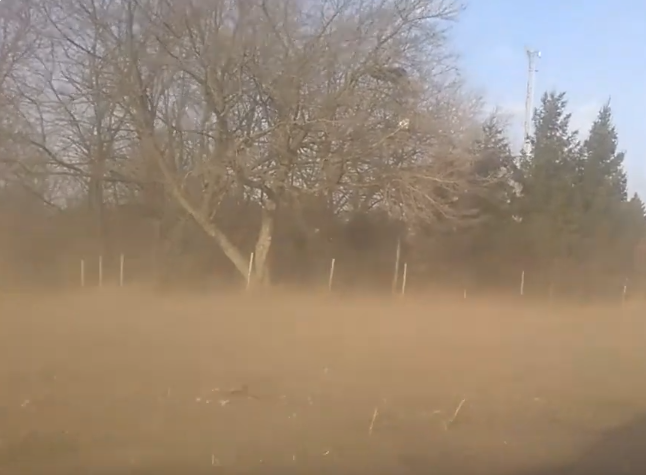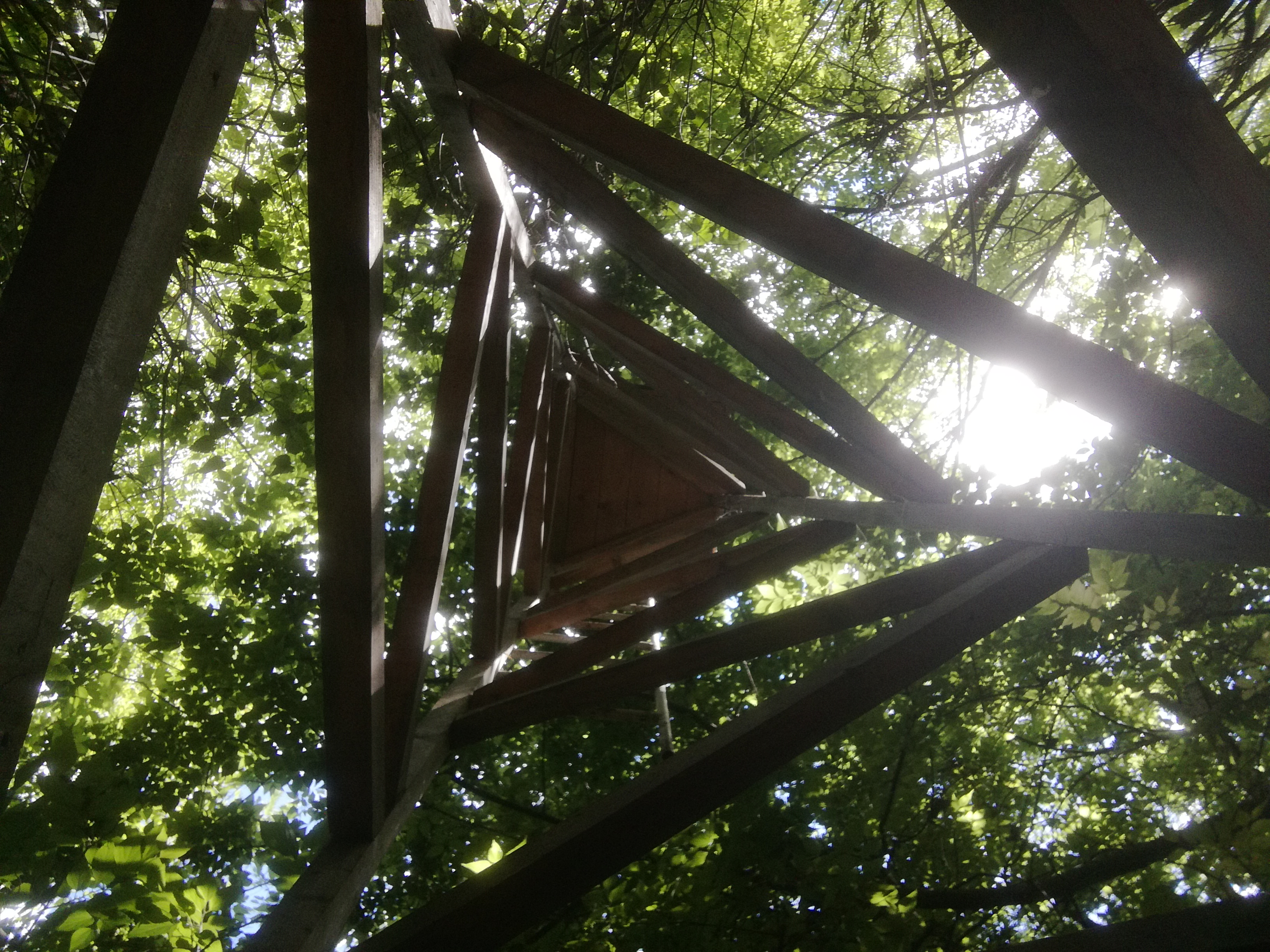COP28 – Túlnépesedés és mértéktelen fogyasztás
Lajtár Lili vagyok Magyarországról, Európa egy kicsiny országából, egy országból, amiről mindenkinek más és más gondolat járja át fejét, más és más érzés járja át testét, főleg, ha csak a médiát használja információszerzésre. Elsőként, még 19 éves biológushallgatóként írtam levelet klímakonferenciára, amely éppen az akkori COP26 volt, és amelyben a bolygó problémáit igyekeztem más nézőpontokból megvilágítani, ami teljesen időszerű azóta is, ezért ajánlom a figyelmetekbe ( http://www.lajtarlili.hu/climate-change-2021 ). Most 21 évesen is törekszem segíteni az ezen a konferencián összegyűlt döntéshozókat.
Sajnos a COP26 óta is csak tovább romlott az emberek tömegeinek életminősége. Nekik, nekem a jövő minden nappal egyre bizonytalanabb és akkor az is tovább nehezíti a mindennapokat, hogy éppen melyik néphez tartozik, melyik országban él az ember. Hiszen az egyben nemcsak meghatározza a gondolkodását, a tetteit, hanem az országával kapcsolatos előítéletekkel együtt összességében alakít ki róla egy vélhetően valamely irányban eltúlzott képet. Már rég eljött az ideje, hogy ezeket a szűröket levegyük tudatunkról és lássunk is végre „csupasz szemmel”. Akkor vágjunk bele.
Nos, nincs felhatalmazásom bárki vagy bármi képviseletére, így csak magamat képviselem, és a legcélravezetőbb talán, ha te is csak magadat képviseled, ő pedig saját magát. Csak én vagyok, te, meg ő. Talán eljött az ideje a világban egy láthatatlan, személytelen, de a mostanitól eredményesebb összefogásnak, mégpedig, hogy mindenki tegyen annyit és olyat, amihez a mindennapokban hozzáférése van. Mint például, ha szemetelhetnél, akkor ne tedd, ha olyan dolgot vásárolnál, amire valójában nincs szükséged, akkor ne vásárolj, ne tegyél hozzá a globális fogyasztáshoz és még sorolhatnám. Ezért úgy vélem, hogy ne egy másik emberben keressük, vagy egy másik embertől várjuk a megoldást, hanem mi magunk legyünk azok, mi magunk legyünk a változás.
Fontos kiemelnem, hogy nem egy újabb Greta Thunberg-et szabadítanának a világra általam, aki majd a már szokásos vagy egy újabb csoport nyakába varrja a környezetszennyezést, a klímakatasztrófát, az egyén számára értelmetlen háborúkat. Vagy felelősöket keres a mindent átszövő emberi brutalitás és agresszió miatt, esetleg szót emel az egyre nagyobb szinteket elérő gyűlöletkeltés ellen, hiszen azon kívül, hogy ezek rossz dolgok, de egyben nagyon alkalmasak is más problémákról elterelni a figyelmet. De ez az ember - azaz én - teszi mindezt azért, mert tudja, hogy minden kihat mindenre, hogy most teátrálisan harmadik személyben beszéljek magamról.
Nos, a COP26-ra írt levelemet direkt nem szórtam tele számokkal, a COP27-re nem írtam, a mostani COP28-ra pedig akkor most jöjjön néhány szám, ha már nem sajnáltam az időt, hogy számolgassak. Egy folyamatosan változó összetételű – hiszen folyamatosan születünk és halunk - 57 millió ember a leginkább felelős mindenért, minden jóért és rosszért és annak minden elképzelhető értelméért, ők az agytrösztök, az összes többi pedig a megvalósító. Így jelentősebb mértékben vagy sem, de az elszórtan élő kevesek kivételével mind felelősek vagyunk és egyben mind vesztesek is. Mert ezen a bolygón mindenki vesztes, még, ha nyerünk is időnként, végül minden odaveszik, elveszik a létezésünk, vele együtt az időnk, a tudásunk, a tapasztalatunk. Most mindenkiről beszélek, beleértve az 57 millió embert is, de közben az egyénről is beszélek, mert mind egyének is vagyunk, egyetlen ember, a születésünk és halálunk közé ékelődve.
Kevés kivétellel mindenkire ez vár, mert az egyének, - azok, akik politikai hatalommal és bizonyos tömegek befolyásolására képes materiális/immateriális javakkal nem rendelkeznek - szerepe a fogyasztás, erre lettünk kiválasztva, nem arra, amire például az újítók, akik szerepe a haladás, akik egész életükben csak fejlesztenek, majd örökül hagynak egy kisebb vagy nagyobb jelentőségű újítást, melyet ha mindenki felhasznál, gyorsan új irányokba fordulhat a jövő. De vajon mennyien vannak? Valószínű, hogy nem több, mint évi 7 millió ember nézete, tudása, tapasztalata világítja be a jövőt.
Ha számolgatunk, hogy ma a bolygó lakossága 8 milliárd ember, ebből 1 milliárd kiszolgáltatott gyerek, 1 milliárd magatehetetlen idős, 1 milliárd így vagy úgy, de beteg.
Aztán közel 2 milliárd mélyszegénységben vagy nyomorban él – ők az én olvasatomban az „alvó fogyasztók”, akiknek a materiális javakhoz jutása egyrészről megszüntető hatással bírna a gazdasági helyzetükre nézve, ami jó, másrészről viszont előre nem látható fogyasztási hullámot is generálna, így jelentősen emelné a környezetre gyakorolt terhelést, szóval ez egyben egy roppant elgondolkoztató téma is -.
Így már csak 3 milliárd ember maradt, akik közül a leggazdagabb 3 millió 600 ezer ember birtokolja a világ vagyonának felét. Ebből a 3 milliárdból mindössze 2.95 milliárdé a vagyon 1.1 százaléka. Tehát a világ vagyonának 98 százalékát 50 millió ember tudhatja a magáénak, azaz 50 millió ember vagyona képviseli a tulajdont, amit 7 millió ember szellemi, agyi képessége szolgál ki, hogy a maradék majdnem 8 milliárdot a kormányok és a gazdasági szereplők összefonódásán keresztül fogyasztóként felhasználja. De ez miért lehet így? Mert mindig is így volt, de az utóbbi évtizedekben elértük, mára pedig túl is léptük a kritikus tömeget, túl sok ember túl sok fogyasztása már nem fenntartható a bolygó radikális válaszai nélkül. Jó hír, hogy a történelemben ott van minden információ, sőt a múltban benne van a jövő iránya is, mint ahogy az is, hogy a pénz mozgat mindent, a pénz hatalmat ad, és az élet minden aspektusát átszövi.
A történelemben állandó és visszatérő motívumok is vannak, mint például, hogy a társadalmi különbségek, vallási eszközű és célú háborúk, kizsákmányolás, gyűlöletkeltés tulajdonképpen mind a bolygó erőforrásaiért folytatott harc eszközei. Az alkalmazott módszerek pedig az emberi létezés, az emberi gondolkodás velejárói, melyet leginkább csoportokba, közösségekbe, társadalmakba szerveződve a politikai érdekeknek behódolva követünk el. És itt van nekünk az elérhető legtökéletesebb politikai rendszer, a demokrácia. Vele kapcsolatban azért muszáj tisztában lennünk, hogy még a demokrácia is elnyomó az egyénre nézve, így még egy adott demokratikus állam is mindig az erősek érdekében létrehozott legitimizált kizsákmányolás egy bizonyos szintje, a politika napi híreit fogyasztani pedig a tömegek, a csőcselék - mint ami én is vagyok – színháza.
Erről is szól az emberiség történelme, ez mind benne van a könyvekben, mint ahogy ez tovább is íródik a fenti szabályszerűség szerint. Mivel változtatni nem lehet rajta, és azt is tudjuk, hogy szükségszerű a tömegek irányítása, így abból kell dolgoznunk, ami rendelkezésre áll. Van biztosan egy olyan valami, ami rendelkezésre áll, melyen elvi síkon képesek is lehetnénk változtatni, ez a valami egy okozat, mégpedig a környezetszennyezés, mely az emberi létezés mellékterméke, és melybe kétséget kizáróan belefullad minden élőlény ezen a bolygón. És, ha már időt szánok arra, hogy összefüggéseket keressek, és a keletkező információkat megosszam veletek, hinni szeretném, hogy ezek a klímakonferenciák, mint a mostani COP28 is, nem valami színjáték és hinni szeretném, hogy időnként meghallgatják az egyént is, nem csak a közösségek, szervezetek, egyesületek tagjainak ki tudja honnan jött véleményeit, ajánlásait.
Elkötelezett természetvédőként lassan már 10 éve blogolok, az általam létrehozott tartalmak (szöveges, képes, videós, interjúk, publikációk, megfigyelések dokumentálása) száma 10 ezer feletti, ráadásul egyetlen szervezetnek sem vagyok a tagja, rokonaim nem befolyásosak, nem ismertek, nem áll mögöttem intézet, akadémia, ennél az oknál fogva nem vagyok szócső, ráadásul ezek a kijelentéseim könnyen ellenőrizhetők. Amikor tartalmakat készítek, mindössze a legnagyobb lobbicsoporttal dolgozok együtt, ez pedig maga a Föld nevű bolygó. Roppant elképesztőnek találom, hogy ezt a konferenciát ismét a fogyasztói társadalom bolygóra gyakorolt hatásai miatt kell megtartani, mint, ahogy ez a kezdetektől fogva minden évben is megismétlődik. De én magyar vagyok és Magyarországon élek és úgy gondolom sokan nem tudják, milyen ebben az országban élni, ezért most leírom, hogy hogyan változtak és merre tartanak az élővilág életkörülményei itt Magyarországon, attól függetlenül, hogy országként tudományosan még 1 %-ban sem vagyunk felelősök a bolygót érintő környezetszennyezésért és a globális felmelegedésért.
Mi, magyarok már nem csak a hírekből hallhatjuk, de már a bőrünkön is érezzük, hogy hazánk sem marad ki a globális felmelegedés negatív hatásaiból, annak ellenére, hogy sokan gondoltuk azt, hogy itt, a Kárpát-medencében, úgymond megbújva, annak védelmét élvezve, mi majd kimaradunk a szélsőségekből. Nagyon úgy tűnik, hogy tévedtünk, ezért most járjuk körbe, hogy mi is történik, miért és tehetünk-e bármit.
Mint ismeretes, Magyarország teljes területének éghajlata kontinentális, az azonban már kevésbé, hogy a klímaváltozás hatásainak felgyorsulása tapasztalható az utóbbi 3-4 évben, ami miatt egyre gyakoribbak az aszályos időszakok, de ugyanakkor megjelentek a ritkán hulló és villámárvizeket okozó nagy mennyiségű esők is. Van egy hatalmas terület hazánkban, az ország területének egytizede, amely egy különösen érintett térség a klímaváltozás hatásainak gyorsulásában, ez a Duna-Tisza közi homokhátság, melynek három vármegye is területét adja, de átnyúlik a szomszédos Szerbiába is.
A kedvezőtlen hatások már megmutatkoznak a biodiverzitás csökkenésében, különösen szembeötlő a nagytestű rovarfajok szignifikáns csökkenése, ezért cselekvési stratégia kidolgozását kellene minden ebben érdekelt félnek sürgetnie. Magyarország Alaptörvénye a fenntarthatóságot kiemelt jelentőségű értékként fogadja el. Az Alaptörvény azt is előírja (O. cikk), hogy Magyarország védi és fenntartja az egészséges környezetet és, hogy a természeti erőforrások, a termőföld és az ivóvízkészlet, valamint a biológiai sokféleség és a kulturális értékek a nemzet közös örökségét képezik. Két elvet érdemes mindennél jobban szem előtt tartani, az egyik az, „Elővigyázatosság és megelőzés elve”, amely leírja, hogy az éghajlatváltozás folyamatával, okaival és hatásaival kapcsolatban fennálló tudományos bizonytalanságok nem képezhetnek hivatkozási alapot a szükséges megelőzési és alkalmazkodási intézkedések elodázására.
A másik elv az „Átterhelések elkerülésének elve”, amely leírja, hogy a klímavédelmi beavatkozások nem vezethetnek újabb fenntarthatósági problémákra, más környezeti elemekre vagy más földrajzi térségekre vonatkozó átterhelésekre. Azért azt mindenképpen érdemes szem előtt tartani, hogy, ha Magyarország teljesen „zöld” országgá válna, a globális destruktív környezeti hatások fékezésében elenyésző szerepet töltene be, azt továbbra is csak széleskörű nemzetközi összefogással lehetne elérni. Tehát, a magyar emberekben és minden kis nemzet állampolgárában is, amely éppen erőteljesen dolgozik a teljes „zöldítés” megvalósításában, visszatartó erőként van jelen a „nagy nemzetek” tenni nem akarása.
De, mindezek ellenére, mi, magyarok is foglalkozunk egy olyan problémával, ami túlmutat országhatárainkon, ezért a klímaváltozás ellensúlyozásaként mitigációs és adaptív célokat fogalmaztunk meg, azaz az üvegházhatású gázok csökkentését és az adottságainkkal összhangban a társadalomra még ismeretlen hatással bíró környezeti terhelés alkalmazkodási lehetőségeinek és korlátainak megismerését. Az is igaz, hogy ezek azonban erre, az ország csak egytizedét kitevő térségre túlzottan nagy léptékben határozzák meg a sikeres célokat.
Mint, ahogyan évekkel ezelőtt egy kisfilmemben is megfogalmaztam ( https://youtu.be/WizIjuw0cW8?si=Puu0NBZ1FKmjeGAm ), a legnagyobb természetvédelmi és környezetvédelmi eredményeket a legkisebb emberi beavatkozással lehet elérni. De legbelül most én is úgy érzem, hogy nagyon tenni kellene valamit, hiszen én magam is ezen a minden szinten vesztes földrajzi területen élek, mely a média szerint félsivatagosból éppen sivatagiba fordul. Azonban a valóság inkább ahhoz áll közelebb, hogy a csapadékeloszlás mutat egyenlőtlen értékeket, ezért vannak időnként hosszabb, akár több hónapos csapadékmentes időszakok, mint ahogy már korábban említettem. Ezeket a hosszabb időszakokat kell a természetnek és a mezőgazdaságnak is áthidalnia. A jelent tekintve, most minden nappal valami elveszik, egy hűvösebb vagy esősebb nap, elveszik néhány helyváltoztatásra amúgy képtelen faj, amelyek pedig tudnak futni, mászni vagy repülni, azok megpróbálnak megjelenni egy még élhetőbbnek tűnő ártérben, hegységben, egy még megmaradt vizes élőhelyen, hogy azzal is hamis adattá váljanak, hogy itt és ott megjelent egy-egy új faj, szóval mégis van remény, mégsem csökkent a biodiverzitás.
A Duna-Tisza közi homokhátság bizonyos részeit nagy valószínűséggel elveszíti a természet és elveszítjük mi, emberek is mint mezőgazdasági célra hasznosítható területet. De, ahol még van remény, ott az élővilág és mi is már csak a mozaikos elrendezésében bízhatunk, ahol bizonyos raszterben oázis-szerűen fent lehetne tartani a növény és állatvilágot. Jó ötletnek tartanám, ha a mezőgazdasági gazdálkodók továbbra is az oázisok között gazdálkodhatnának – hiszen ma is ez jellemzi a vidéket -, vizet tározókból és csatornákból kapnának, melyet a csapadék és a folyók többlet vizei vagy tisztított szennyvizek szolgálnának ki. Ami szintén biztos, hogy a talajvízszint szignifikáns csökkenése valószínűsíthető, mert a talajban található édesvízkészlet hasznosulás nélkül folyik el a csatornákon, hiszen Magyarország már rég nem a vizek országa, hanem csak az átfolyó vizeké. Ezért nagyszabású vízmegtartási célú építési munkálatok kezdődtek, időnként átadásra is kerül egy-egy projekt, szóval halad a munka, hiszen egyelőre az épített műtárgyak, mint a gátak, csatornák, zsilipek vagy a körforgásba építések, mint az erdők vagy sztyeppek a lehetséges megoldások.
Ha feltesszük a kérdést, hogy mégis milyen megoldásokat kínálhatnánk még a már meglévők mellé, akkor nagy valószínűséggel a tudományt és a tömegek elérését kellene górcső alá vennünk. A tudomány által elérhető tudásmennyiség résztudományokká szabdalta az egymással szorosan összefüggő tudományterületeket, akkor ez szükségszerűnek és a jövőre nézve hasznosnak tűnt. Az elmúlt évtizedekben azonban kénytelenek voltunk szembesülni azzal az egyetemes törvényszerűséggel, hogy minden mindennel összefügg, így már csak részekben (résztudományokban) gondolkozni egyre inkább korlátolttá tett/tesz minket egy-egy szerteágazó probléma megoldását illetően.
A klímaváltozás is egy ilyen probléma, egy olyan okozat, ahol nem lehet elég mélyre ásni, hogy megláthassuk a probléma gyökerét, mert szerteágazó és közvetett okozatok is jelen vannak a mélyben, melyek okait csak az idő múlásával ismerhetjük fel – feltéve, ha emellé kellően felkészültek is vagyunk -, az időből pedig egyre kevesebb áll a rendelkezésünkre. Ha a klímaváltozás problémakörét számtalan nézőpontból vizsgáljuk, rá fogunk jönni, hogy a tudományok területén eljött az ideje a paradigmaváltásnak, a résztudományokat kénytelenek leszünk újból egymásba kapcsolni. Erre kitűnő megoldási lehetőséget jelent, ha bevonjuk a mesterséges intelligenciát (AI), hogy komplex módon vizsgálódjon és kutasson fel hosszú távon is járható utat az emberiség, a természet jövője számára.
Amire azonban roppant mód figyelni kell, hogy csak valós adatokhoz szabad hozzáférést biztosítani az AI-nek, különben nem hogy segítene, de inkább hibákat és károkat fog okozni mindannyiunknak. Ha most megállunk pár pillanatra és elmerengünk, akkor egyrészt, érdekes megtapasztalni azt, ahogy kimaradt egy tudásszint, ahogy megszűnt az a kevés polihisztorság is, ami létezett, és most a tudást testen kívülre helyezve, gyakorlatilag az AI-ből fogunk csinálni egy mindent tudó és komplexen gondolkozó entitást. Másrészt, azt a kapcsolódási potenciált, amelyet az internet globálisan nyújtani tud és képes összekapcsolni a legkisebb egységet, az egyént az egyénnel, vagy az egyént mindannyiunkkal, feláldoztuk a profit oltárán. És inkább alkottunk egy emberhez hasonló szellemet, az AI-t, mint hogy több milliárd embert kapcsoljunk össze a virtuális térben, hogy szabadon ötletelhessünk, hogy egy nagy kollektív tudattá álljunk össze és megoldást találjunk a legégetőbb problémáinkra, hiszen minden problémára létezik legalább egy használható megoldás.
A globális felmelegedés legnagyobb problémájának, mint ahogy a címben is írtam, a túlnépesedést és az ezzel járó fogyasztást látom, de problémának látom a mindennapos mértéktelen és indokolatlan fogyasztást is, sőt talán a legnagyobb veszélyt valójában az rejti a bolygó számára.
Így vagy úgy, de az emberiség a sorsszerűsége és fejlődésének időszerűsége közé van szorulva, ezért csak annyit tehetünk, hogy szerepünk szerint cselekszünk minden egyes nap és kíváncsian várjuk a fejleményeket...


